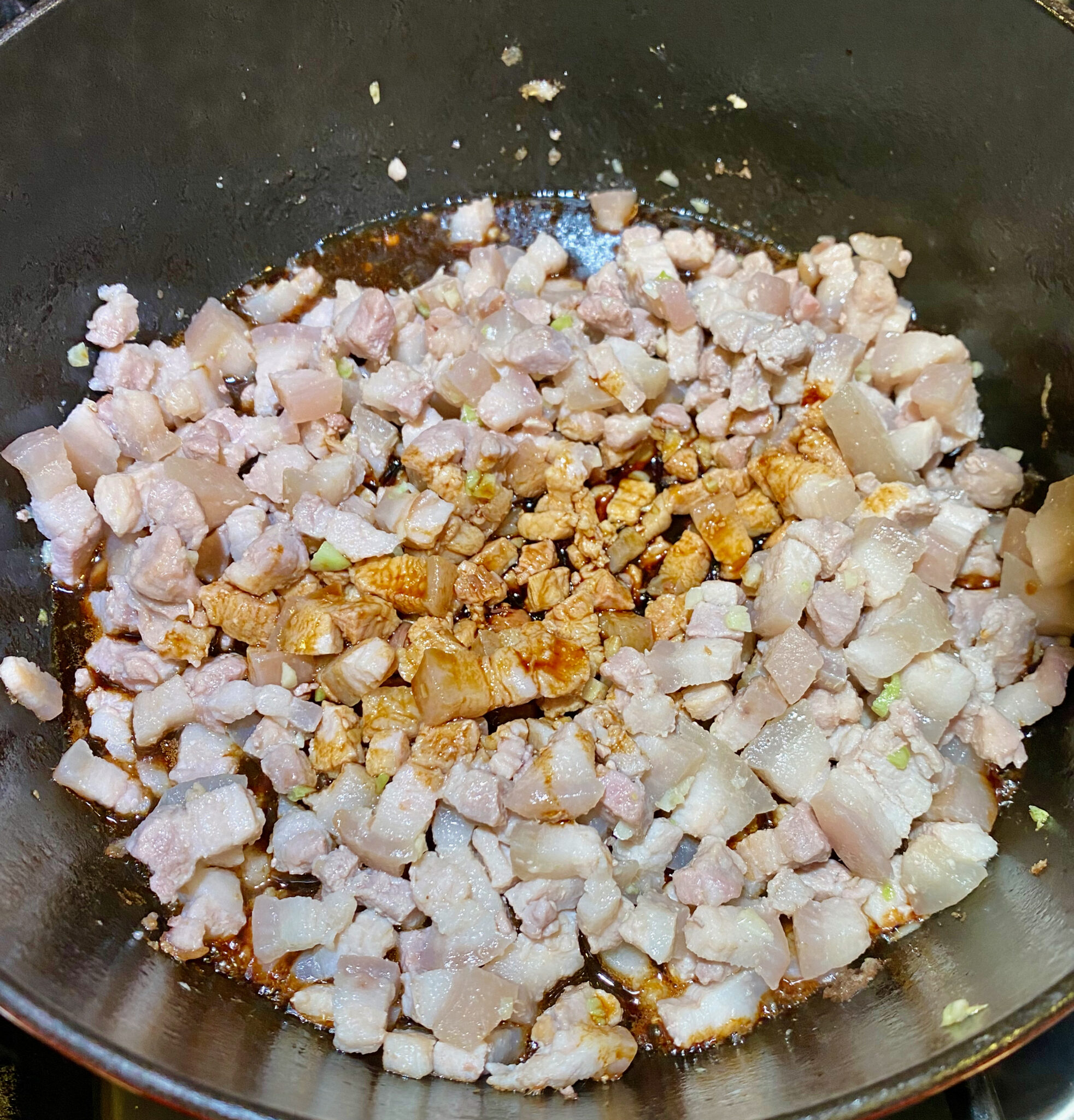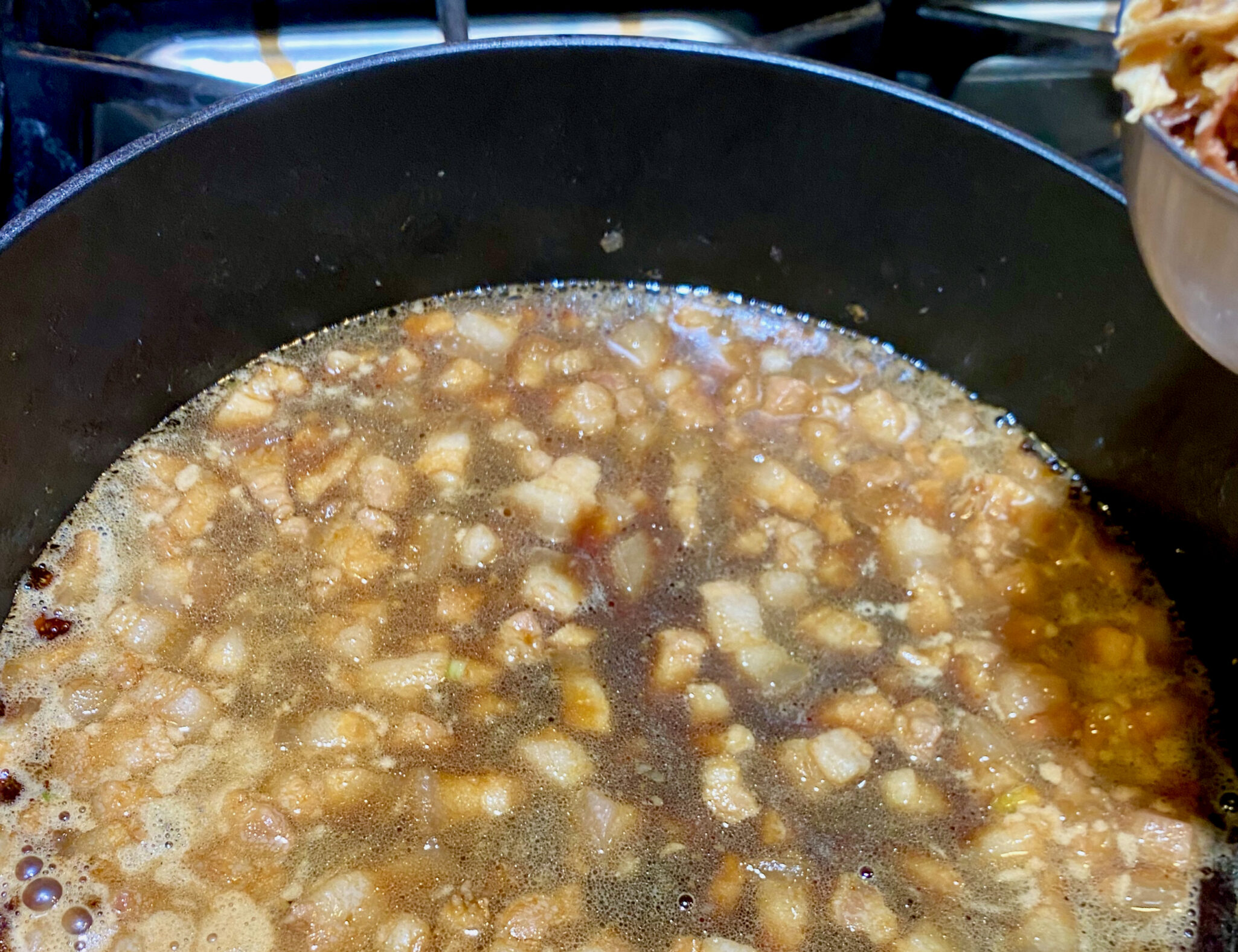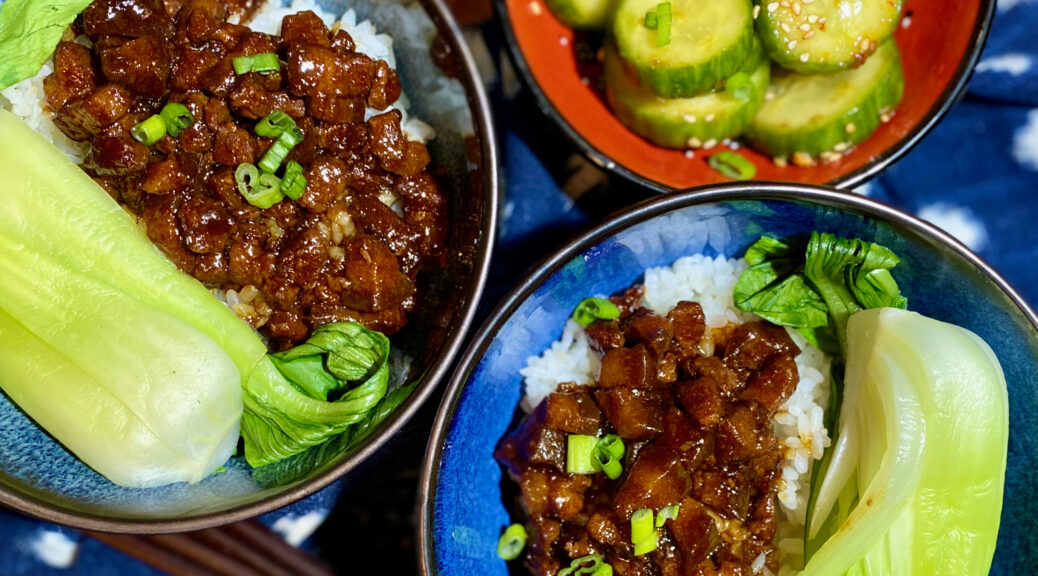
Braised Minced Pork Rice, Taiwanese Soul Food (肉燥饭)
My favorite foods can be eaten in a bowl and with a spoon. The perfect fall day would be snuggled up on the couch with a spoon and a bowl of goodness nestled in my hands, watching my favorite K-drama.
Bowl Food (noun 1)
synonym: bowl of goodness, bowl food-soul food
- a concave usually nearly hemispherical vessel: a rounded container that is generally larger than a cup, filled with deliciousness such as Braised Pork Rice (肉燥饭), Ramen, Udon, or Won Ton Noodle Soup
- food that immediately transports you back to your childhood
So, it is not surprising that the first recipe I tried from Clarissa Wei’s new book, Made in Taiwan, was a recipe for Rou Zao Fan or Braised Pork Rice. It fits the definition of bowl food to a tee. A rich, flavor-packed sauce made with diced pork belly and shallots, served over rice. Rou Zao Fan is the southern Taiwan version of Lu Rou Fan. A simpler version of Lu Rou Fan., which means no star anise (5 Spice powder) YAY or shiitake mushrooms BOO. Just pure porky goodness accented with soy paste, soy sauce, and sugar. Two favorite Taiwanese rice bowls include Lu Rou Fan, and Ja Y i Fan (Turkey Rice), which is the perfect way to use any extra Thanksgiving turkey…that is, besides a turkey, stuffing, cranberry, gravy, and mayo sammie.
Ingredients
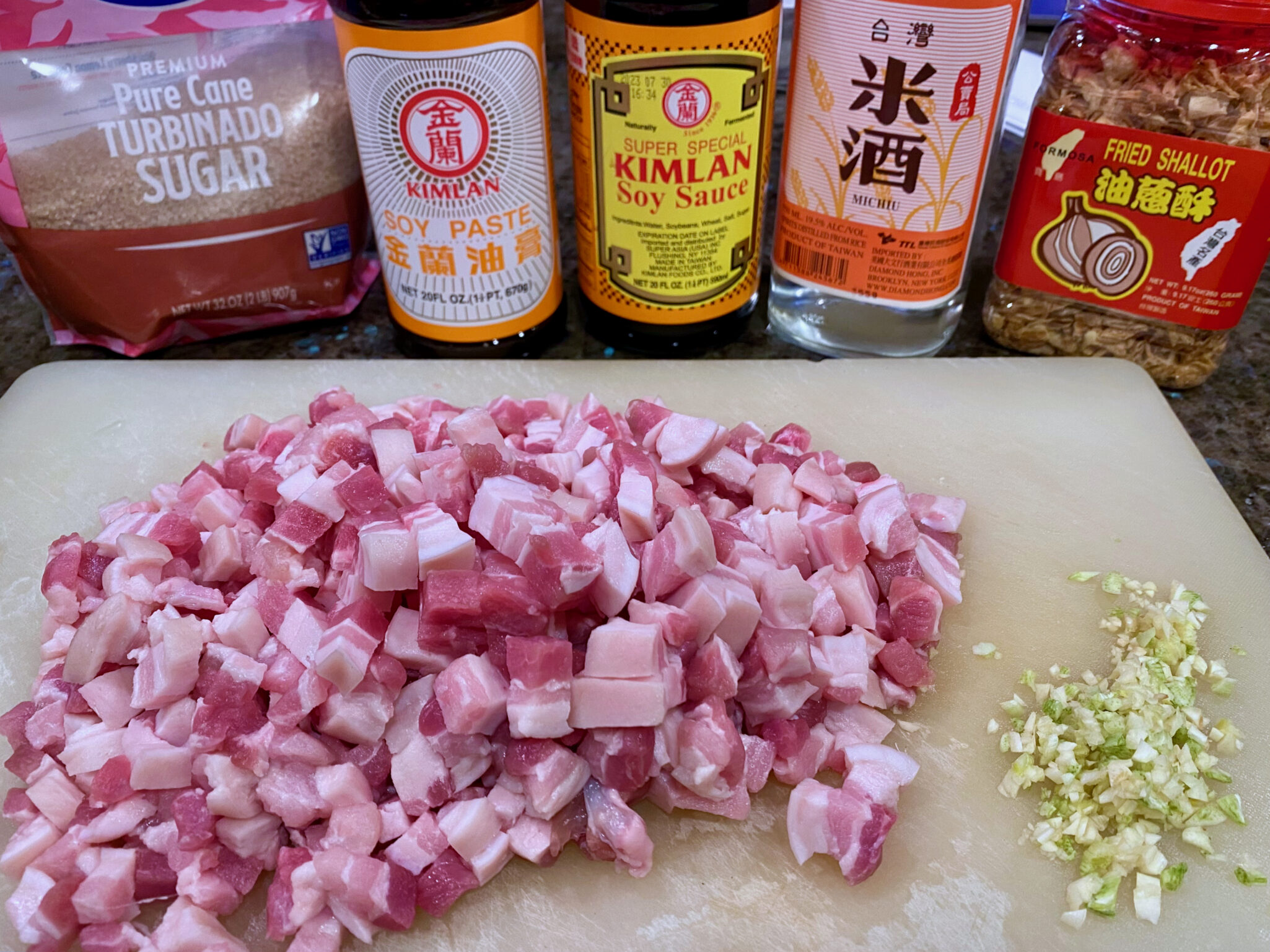
Pork: Use pork belly with skin. You will find recipes that use ground pork or pork shoulder which are pretty darn good. But, for the real deal, use pork belly. The fat provides flavor and unctuousness that is unmatched. Pork belly is just unsliced bacon. Yes, it’s rich. This dish is so flavorful, so jam-packed with umami that a little goes a long way. Whether it was born out of necessity, meat is generally not the main ingredient in a Chinese meal. Rice, noodles and vegetables are the base, and meat is the accent. I make a big batch to eat right away and freeze what’s left for quick meals down the road.
Pork belly can be found in most Asian stores. If you can’t find it in a slab, buy the thickest sliced pork belly and cut it into 1/4-inch pieces. If your local grocery store has a butcher counter ask if they have uncured pork belly.
Fried shallots: Pick up fried shallots at any Asian Store. It is relatively inexpensive BUT you can also make your own using the microwave. Place 1 cup of thinly sliced shallots in a microwave-proof bowl (I use an Anyday bowl, I found the recipe on their site) with 1-1/4 cup vegetable oil. Microwave uncovered for approximately 7 minutes (1000-watt microwave) or until golden brown. If the shallots aren’t brown enough, microwave in 20 to 30-second increments. Don’t let the shallots get too dark. They will continue to cook after zapping them. Let the dish sit in the microwave for an additional minute before removing.
THE BOWL & OIL WILL BE SUPER HOT, REMOVE THEM CAREFULLY WITH GLOVES. Remove shallots with a strainer, place on a paper towel, and cool completely. This will also work with scallions and leeks. BONUS. The aromatic oil can be used in stir-frying or for making sauces. The fragrant oil makes homemade fried shallots worth the effort.
Convenience hack: During the holidays Trader Joe’s carries fried onions in a can for the proverbial green bean casserole. They work pretty darn well for this recipe and Taiwanese Turkey Rice.
Taiwanese Soy Paste: Unique to Taiwan and found in Chinese grocery stores. It’s soy sauce on steroids. The addition of sugar, and sweet rice, creates a viscous, sweet, salty pourable sauce (despite being called a paste). It is similar to oyster sauce without the crustacean vibe. If you can’t find soy paste, you could try oyster sauce…🤷🏻♀️
Soy Sauce: I know what you’re thinking, got this…but, sorry to burst your bubble. Taiwan’s soy sauce is different from China’s or Hong Kong’s. Nuanced? Yes. Widely available, Taiwanese soy sauces include Kimlan, Wan Ja Shan, or Amoy. It is similar to Japanese soy sauce. If you don’t have a Taiwanese soy sauce I would use Kikkoman, in particular their organic soy sauce. Both are a little sweeter than Chinese/HK Soy sauces.
Add soy sauce, soy paste, sugar, garlic, and water or low-sodium broth.
Bring to a boil and add the fried shallots. Lower heat to a simmer and continue cooking for approximately 2 hours, or until the pork is tender. If the stock gets low add a bit of water or stock.
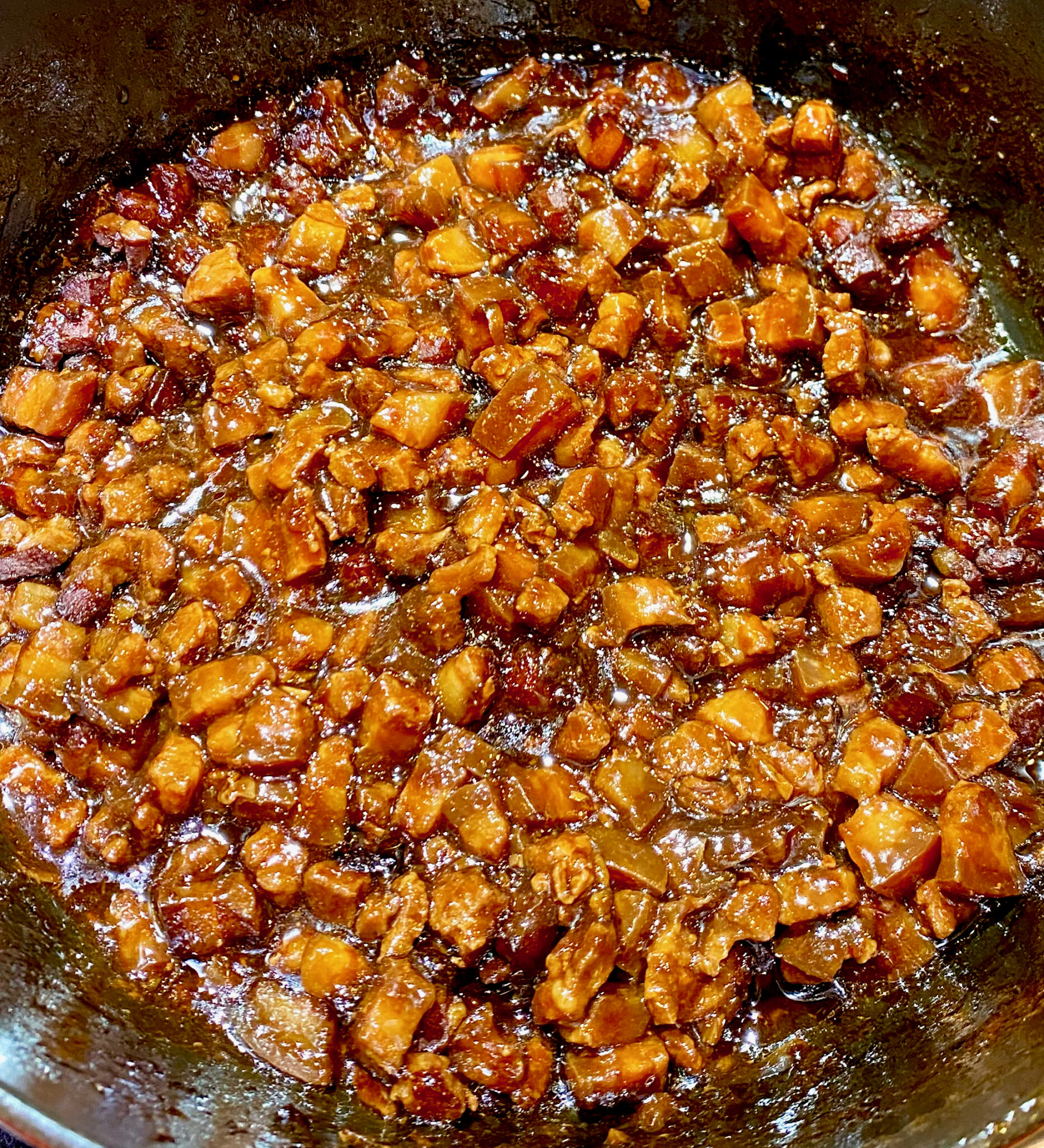
Finishing Touches
Serve with steamed broccoli, bok choy, or greens of choice, and of course, spooned over a bowl of rice. Add hard-boiled eggs, I like them jammy like a ramen egg, but traditionally Taiwanese eggs are hard-boiled. You can add diced shiitake mushrooms to braise with the pork, which adds a little healthy vibe to it. Garnish with scallions, or cilantro, and more fried shallots!
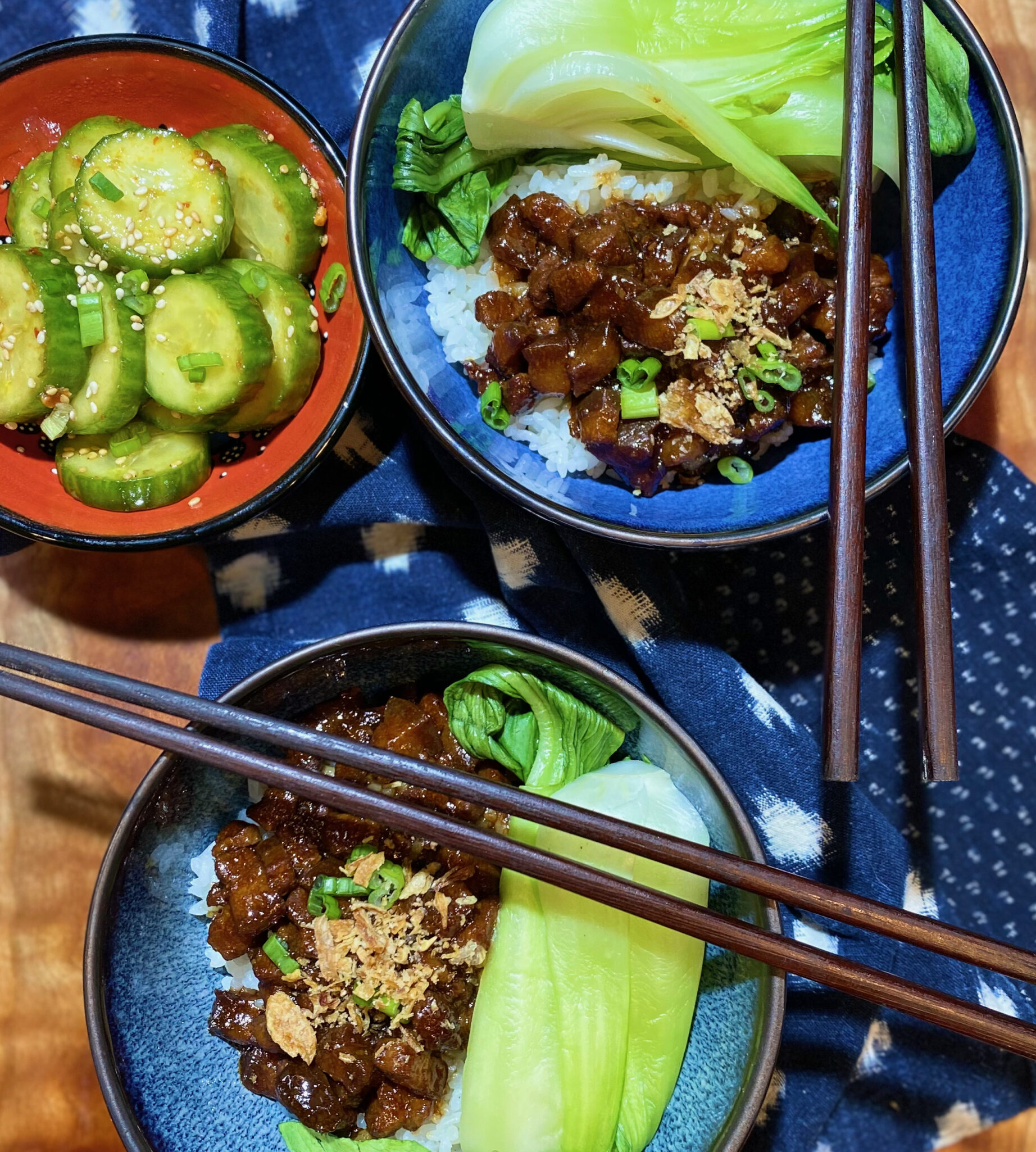
Enjoy!
Braised Porkbelly Rice Rou Zao Fan
Ingredients
- 2 pounds skin-on boneless pork belly 900 grams
- 1 tablespoon canola or soybean oil
- 3 garlic cloves
Sauce
- 2 ½ cups water or low sodium chicken broth
- ½ cup plus 3 tablespoons soy sauce
- 2 ½ tablespoons coarse raw sugar such as demerara
- 2 tablespoons Taiwanese soy paste in a pinch, use oyster sauce
- 2 tablespoons Taiwanese rice wine michiu or cooking sake
- ½ cup fried shallots store-bought, or homemade, see post
Accoutrements
- Cooked short-grain rice for serving
- Ground white pepper
- hard-boiled eggs
- choice of greens, ie. bok choy, broccoli, steamed
Instructions
- Freeze the pork belly until partially frozen, about 1 hour. This make it much easier to cut. Dice the pork belly into 1⁄4-inch (6-millimeter) cubes.
- In a large pot over medium-high heat, heat oil. When it starts to shimmer, add the diced pork belly. Cook, stirring often, until the pinkish color of the meat is gone and the fat begins to render a bit, about 4 minutes. Add the garlic, and saute until fragrant, about 20 seconds. Add the water, soy sauce, sugar, soy paste, rice wine and shallots.
- Cover, bring to a boil, and then reduce flame to simmer over very low heat, leaving the lid slightly ajar. Stir occasionally, until the pork is melt-in-your-mouth tender, 1½ to 2 hours.
- If the braising liquid is reducing too fast and beginning to caramelize and stick to the bottom of the pot, add up to 1⁄4 cup (60 milliliters) more water. The pork is done when it’s soft and tender. Season with white pepper to taste.
- To serve, scoop approximately 1/4-1/3 cup of the finished braised pork belly over a bowl of cooked rice. Serve with steamed bok choy or greens of choice. Cucumber salad is also a nice side.
